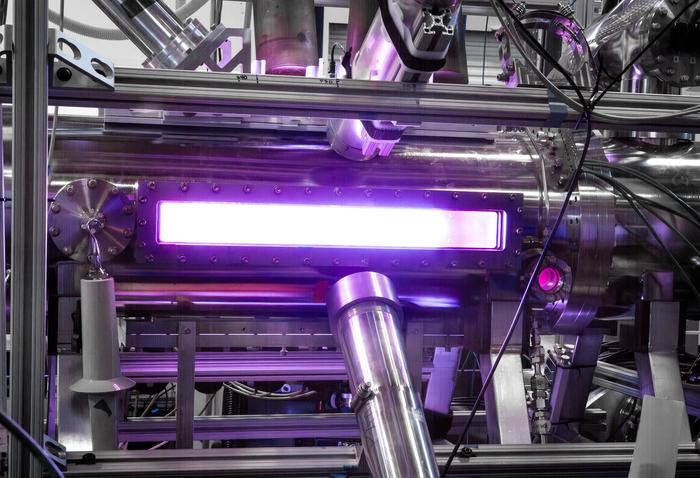Zap Energy’s unique approach to fusion, known as a sheared-flow-stabilized Z pinch, has achieved plasma electron temperatures between 11 and 37 million degrees Celsius (20 to 66 million degrees Fahrenheit) in their Fusion Z-pinch Experiment (FuZE) device. These temperatures, roughly equivalent to the core of the sun, were achieved in a device that is a fraction of the scale of other fusion systems.
A new research paper, published in Physical Review Letters, details the measurements made on Zap Energy’s FuZE device. The ability to achieve such high temperatures is a key hurdle for fusion systems, and FuZE is the simplest, smallest, and lowest-cost device to have achieved it. Zap’s technology offers the potential for a shorter and more practical path to commercial, carbon-free energy production.
Collaboration with Lawrence Livermore National Laboratory and University of California, San Diego
The results reported in the paper were collected in 2022 in an ARPA-E funded collaboration with researchers from Lawrence Livermore National Laboratory (LLNL) and University of California, San Diego (UCSD), who developed the measurement system used for these results. Scott Hsu, Lead Fusion Coordinator at the DOE and former ARPA-E Program Director, notes, “What this team has achieved here is remarkable and reinforces ARPA-E’s efforts to accelerate the development of commercial fusion energy.”
Zap Energy’s technology is based on a plasma confinement scheme known as a Z pinch, where large electric currents are channeled through a thin filament of plasma. While Z-pinch fusion has been experimented with since the 1950s, Zap has solved the problem of short-lived plasmas by applying a dynamic flow through the plasma, a process called sheared-flow stabilization.
Next-Generation Device FuZE-Q Commissioned
In 2022, Zap commissioned its next-generation device, FuZE-Q, which has a power bank with ten times the stored energy as FuZE and the capacity to scale to much higher temperatures and densities. Zap Energy CEO and co-founder Benj Conway states, “We started Zap knowing we had a technology that was unique and outside the status quo, so definitively crossing this high electron temperature mark and seeing these results in a premier physics journal is major validation.”


